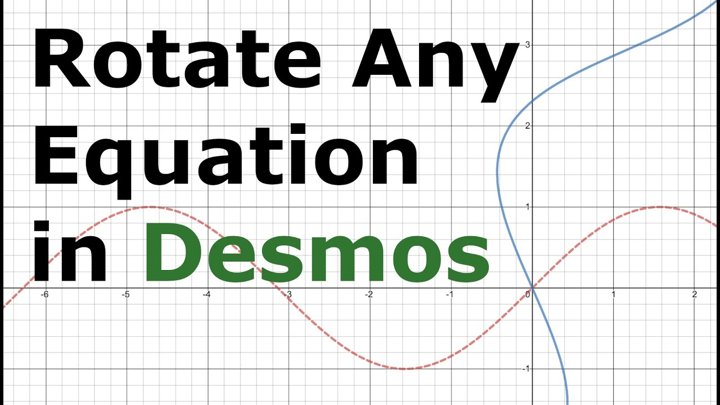Unlocking the Power of Function Rotation on Desmos: A Step-by-Step Guide
In mathematics, functions play a crucial role in modeling real-world phenomena. When working with functions, it’s essential to be able to rotate them effectively to better understand their behavior and make meaningful predictions. In this post, we’ll dive into the world of function rotation on Desmos, exploring the steps you can take to master this powerful tool.
What is Function Rotation?
Function rotation, also known as horizontal translation or phase shift, is a fundamental concept in mathematics that involves shifting a function along the x-axis while maintaining its shape and properties. This technique is particularly useful when analyzing functions with non-linear behavior, such as trigonometric and exponential functions.
Why Rotate Functions on Desmos?
Desmos is an interactive math software that allows users to create, visualize, and explore mathematical equations. When you rotate a function on Desmos, you’re effectively modifying its phase shift, which can reveal new insights into the function’s behavior. Here are some reasons why rotating functions on Desmos is valuable:
- Gain deeper understanding of function properties: By rotating functions, you can better comprehend their periodicity, symmetry, and other essential characteristics.
- Enhance problem-solving skills: Function rotation helps you develop a more nuanced understanding of mathematical problems, enabling you to tackle complex issues with greater ease.
- Explore real-world applications: Rotating functions on Desmos can help you model real-world phenomena, such as sound waves, electrical signals, and population growth.
How to Rotate a Function on Desmos
Now that we’ve covered the importance of function rotation, let’s dive into the steps. Rotating a function on Desmos is a straightforward process:
- Type or paste your equation**: Start by entering your function into the Desmos editor. You can type it in manually or copy and paste from another source.
- Identify the rotation parameter**: Look for the “a” parameter, which represents the phase shift or horizontal translation of your function.
- Adjust the rotation value**: Drag the “a” slider or enter a new value to rotate your function. You can also use the arrow keys or mouse wheel to fine-tune the adjustment.
- Observe the results**: As you adjust the rotation parameter, observe how the function changes shape and behavior. This will help you better understand its properties and relationships.
Tips and Tricks for Function Rotation on Desmos
To get the most out of function rotation on Desmos, keep these tips in mind:
- Experiment with different rotations**: Don’t be afraid to try various rotation values to uncover new insights into your function’s behavior.
- Use the zoom feature**: Zooming in and out of your graph can help you better visualize the effects of rotation on your function.
- Persistently explore different functions**: Function rotation is a powerful tool that works with many types of functions. Experiment with different equations to develop a deeper understanding of their behavior.
Conclusion
Get started with Desmos today and begin exploring the power of function rotation for yourself!

Best thin gaming laptop 2021: Are you a gamer looking for a sleek and powerful laptop? Our comprehensive roundup of the best thin gaming laptops in 2021 has got you covered! Read our expert review to discover the top picks that won’t break the bank.
Computer monitor with speakers Walmart: Need a new computer monitor with built-in speakers? Look no further! Our guide highlights the top picks available at Walmart, from budget-friendly options to high-end displays. Check out our review now and get ready to elevate your computing experience!






